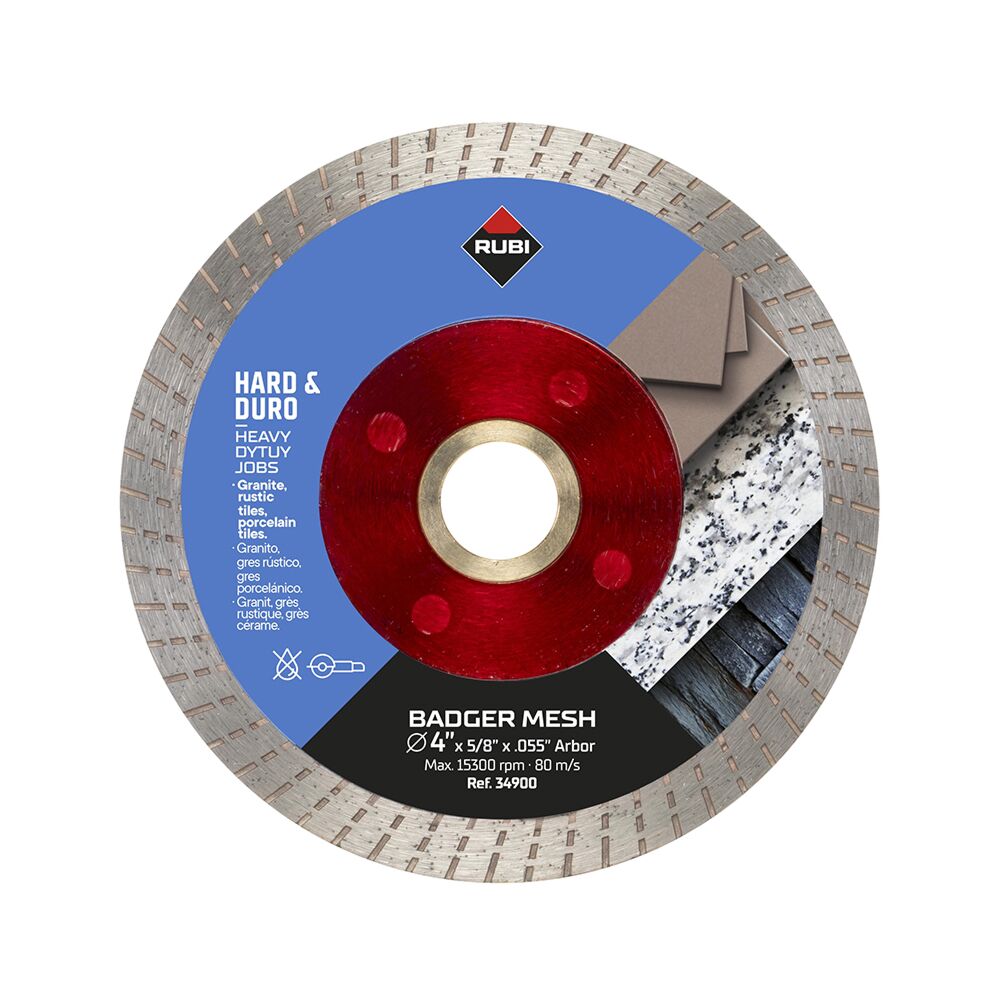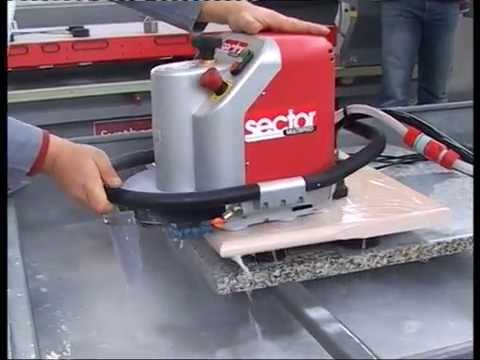Cutting granite, quartz, and other hard materials can be challenging. Standard blades struggle with these tough materials.
That’s where diamond blades shine. Diamond blades are designed to slice through the hardest materials with ease. They are essential tools for professionals and DIY enthusiasts alike. Whether you are installing a new countertop or working on a construction project, a reliable diamond blade makes all the difference.
These blades offer precision, durability, and efficiency. Understanding their benefits and knowing how to choose the right one is crucial. This guide will help you explore the world of diamond blades and find the perfect match for your cutting needs.

Credit: diatool-sh.en.made-in-china.com
Introduction To Diamond Blades
Diamond blades are essential for cutting through hard materials like granite and quartz. These blades are highly durable and effective, making them a top choice for many professionals. In this section, we will explore what diamond blades are and why they are so valuable.
What Are Diamond Blades?
Diamond blades are specialized cutting tools. They have diamond grits embedded in their edges. These diamond particles help to grind through hard surfaces with ease. The blade itself is usually made from steel or another metal. Here are some key features:
- Diamond Grits: Provide sharp, precise cuts.
- Metal Core: Ensures durability and strength.
- Segmented Design: Helps with cooling and debris removal.
These components make diamond blades ideal for tough cutting tasks.
Why Use Diamond Blades?
Using diamond blades offers several benefits:
- Precision: The diamond edges cut cleanly through hard materials.
- Durability: These blades last longer due to their tough composition.
- Efficiency: They cut faster than traditional blades.
Diamond blades are perfect for projects that involve granite, quartz, and other tough materials. Their design minimizes wear and tear on the blade, ensuring consistent performance.
Types Of Diamond Blades
When cutting granite, quartz, and other hard materials, selecting the right diamond blade is crucial. Different types of diamond blades are designed for specific tasks and material types. Understanding the differences can help you choose the best blade for your project.
Segmented Blades
Segmented blades are known for their durability and versatility. They feature a rim divided into segments, which helps with cooling and debris removal.
- Applications: Ideal for cutting concrete, brick, and pavers.
- Advantages: Excellent for dry cutting and long cutting life.
- Disadvantages: May produce a rougher finish compared to other blades.
Continuous Rim Blades
Continuous rim blades have a smooth, unsegmented edge, making them perfect for precision cutting. These blades are often used with water to reduce heat and remove debris.
- Applications: Suitable for cutting tiles, ceramics, and granite.
- Advantages: Provides a smooth, clean cut with minimal chipping.
- Disadvantages: Not ideal for fast cutting or dry cutting.
Turbo Blades
Turbo blades combine the features of segmented and continuous rim blades. They have a serrated edge that increases cutting speed while maintaining a smooth finish.
- Applications: Works well on both hard and soft materials like marble, granite, and concrete.
- Advantages: Faster cutting speed and smoother finish than segmented blades.
- Disadvantages: May wear out quicker than other types if used improperly.
Choosing The Right Blade
Choosing the right diamond blade for cutting granite, quartz, and other hard materials is crucial. It determines the efficiency and quality of your work. The wrong blade can lead to wasted time and money. Here’s a guide to help you choose the right blade.
Blade Size
Blade size plays a key role in your cutting tasks. Larger blades are suitable for deep cuts. Smaller blades offer more control for detailed work.
| Blade Size | Best Use |
|---|---|
| 4-7 inches | Tile and small cuts |
| 8-10 inches | Medium-sized cuts |
| 12 inches and above | Large and deep cuts |
Blade Quality
Blade quality affects the cut’s precision and blade’s lifespan. High-quality blades last longer and provide smoother cuts. Look for diamond concentration and blade segment type.
- High diamond concentration means longer blade life.
- Segment type affects the cutting finish.
- Sintered segments are durable for hard materials.
Blade Compatibility
Blade compatibility ensures the blade fits your cutting tool. Check the arbor size and machine type.
- Match the arbor size with your tool.
- Ensure blade is compatible with your machine type.
- Consider wet or dry cutting based on your machine.
Using a compatible blade prevents accidents and ensures smooth operation. Always read the manufacturer’s specifications for the best match.

Credit: www.masterwholesale.com
Cutting Granite
Granite is a hard and durable material, making it perfect for countertops and flooring. But cutting granite requires the right tools and techniques. Diamond blades are essential for achieving precise and clean cuts. In this section, we will explore the best practices for selecting and using diamond blades for cutting granite.
Blade Selection
Selecting the right blade is crucial for cutting granite effectively. Diamond blades are designed to handle the hardness of granite. Here are some key factors to consider:
- Blade Type: Continuous rim blades provide smooth cuts but are slower. Turbo blades offer faster cuts with moderate smoothness.
- Blade Size: Choose a blade size that matches your saw. Common sizes are 4.5-inch, 7-inch, and 10-inch blades.
- Segment Height: Taller segments last longer and cut deeper. Ideal for heavy-duty projects.
- Bond Hardness: Softer bonds wear out faster but cut granite more efficiently.
Cutting Techniques
Using the right cutting technique ensures you achieve a clean and precise cut. Here are some tips:
- Mark Your Cut Line: Use a grease pencil or chalk to mark the cut line on the granite.
- Secure the Granite: Clamp the granite slab to prevent movement. Ensure it’s stable before cutting.
- Use Water: Water cools the blade and reduces dust. Attach a water hose or use a wet saw.
- Start Slowly: Begin cutting at a slow, steady pace. Increase speed gradually.
- Maintain Blade Depth: Keep the blade depth consistent. Avoid forcing the blade through the granite.
- Finish with Care: Slow down as you near the end of the cut. This prevents chipping and ensures a clean finish.
By selecting the right blade and using proper techniques, you can cut granite effectively. This ensures a smooth, professional finish every time.
Cutting Quartz
Cutting quartz can be challenging. Quartz is a hard material and needs the right tools. Using a diamond blade is essential for precise cuts. Let’s dive into the details.
Blade Selection
Choosing the right blade is crucial. Look for diamond blades designed for cutting quartz. These blades have a high concentration of diamonds. This makes them perfect for hard materials. Here are some tips:
- Check the blade’s durability. It should withstand the hardness of quartz.
- Opt for a blade with a continuous rim. This ensures smooth cuts.
- Consider the blade’s diameter. Choose one that fits your saw.
Cutting Tips
Follow these tips for effective cutting:
- Use a wet saw to reduce dust and cool the blade.
- Mark your cut line with a pencil or tape.
- Start cutting with a slow speed. This ensures precision.
- Apply steady pressure. Let the blade do the work.
- Wear safety gear. Protect your eyes and hands.
Cutting quartz is easier with the right blade and techniques. Follow these tips for successful results.

Credit: www.tools4flooring.com
Cutting Other Hard Materials
Diamond blades are perfect for cutting granite, quartz, and other hard materials. They offer precise and clean cuts, ensuring professional results.
Cutting hard materials like granite and quartz requires special tools. Diamond blades are ideal for these tasks. But, what about other hard materials? Let’s explore how diamond blades perform with different tough materials.
Common Hard Materials
Here are some common hard materials that you might need to cut:
- Marble
- Concrete
- Porcelain
- Tile
- Slate
Each material has unique properties. Understanding these helps in selecting the right blade.
Blade Recommendations
Using the right blade ensures smooth cuts and long blade life. Here are some blade recommendations for different hard materials:
| Material | Recommended Blade | Key Features |
|---|---|---|
| Marble | Continuous Rim Blade | Fine edge, chip-free cuts |
| Concrete | Segmented Blade | Fast cutting, good cooling |
| Porcelain | Turbo Blade | Smooth cut, minimal chipping |
| Tile | Continuous Rim Blade | Precise cuts, smooth finish |
| Slate | Segmented Blade | Durable, effective cooling |
Continuous Rim Blades are best for materials needing a smooth finish. Segmented Blades are great for fast cuts and cooling. Turbo Blades offer a balance, providing smooth cuts and minimal chipping. Choose the right blade for your material. This ensures efficiency and quality in your work. “`
Safety Tips
Working with diamond blades for cutting granite, quartz, and hard materials can be dangerous. Ensuring safety is crucial to avoid accidents and injuries. Here, we discuss essential safety tips to follow. Let’s focus on personal protective equipment and safe cutting practices.
Personal Protective Equipment
Always wear safety gear. Safety goggles protect your eyes from flying debris. Ear protection guards against loud noise. Dust masks prevent inhalation of harmful particles. Gloves provide grip and shield your hands from sharp edges. Steel-toed boots protect your feet from heavy objects.
Safe Cutting Practices
Ensure the blade is in good condition. Inspect for cracks or damage. Use the right blade for the material. Secure the material properly. Avoid forcing the blade through the material. Let the blade do the work. Keep your hands clear of the cutting area. Maintain a clean workspace to prevent tripping hazards. Follow the manufacturer’s guidelines for blade speed and usage.
Maintaining Diamond Blades
Maintaining diamond blades is crucial for ensuring their longevity and performance. Whether cutting granite, quartz, or other hard materials, regular maintenance helps keep the blades sharp and efficient. Let’s dive into some essential tips for keeping your diamond blades in top condition.
Cleaning The Blade
Regular cleaning removes debris and build-up that can hinder performance. Use a soft brush to scrub the blade gently. You can also use a mild detergent mixed with water. Rinse thoroughly and dry the blade completely before storage.
A clean blade cuts more efficiently and lasts longer. It also reduces the risk of overheating and damage.
Blade Sharpening
Sharpening the blade ensures it stays effective. Use a diamond blade sharpener or a specialized grinding stone. Follow these steps:
- Secure the blade in a vice.
- Run the sharpener along the edge at a consistent angle.
- Check for even sharpness around the blade.
Sharpening regularly keeps the blade cutting smoothly and reduces wear.
Storage Tips
Proper storage prevents damage and extends the blade’s life. Store the blade in a dry place away from moisture. Hang the blade on a pegboard or store it flat in a drawer. Avoid stacking blades directly on top of each other.
Here’s a quick storage checklist:
- Dry and clean the blade before storing.
- Store in a dry, cool place.
- Keep blades separated to avoid damage.
Maintaining your diamond blades with these tips will keep them in excellent condition for longer use. Happy cutting!
Troubleshooting Common Issues
Cutting granite, quartz, and other hard materials with diamond blades can sometimes lead to issues. Understanding common problems helps in achieving precise cuts. Let’s delve into some common troubleshooting tips.
Blade Wear
Blade wear is a frequent issue. It occurs when the blade’s segments wear down. This can lead to inefficient cutting. Ensure that the blade is suitable for the material. Using a blade designed for a different material can cause rapid wear. Regularly check the blade for signs of wear. Replace it if the segments are uneven or missing.
Uneven Cuts
Uneven cuts can ruin a project. This usually happens due to blade wobble. Ensure the blade is securely mounted. Check the blade for any bends or warps. An uneven surface can also cause this issue. Make sure the material is flat and stable before cutting.
Overheating
Overheating is a common problem with diamond blades. It can cause the blade to dull quickly. This happens when the blade operates at high speeds without sufficient cooling. Use water to cool the blade during cutting. This reduces heat buildup. Ensure the water supply is consistent. A dry blade can overheat and fail.
Frequently Asked Questions
What Are Diamond Blades Used For?
Diamond blades are used for cutting hard materials like granite, quartz, and concrete. They offer precise and efficient cutting.
How To Choose A Diamond Blade?
Choose a diamond blade based on the material you need to cut. Consider blade specifications and manufacturer’s recommendations.
Can Diamond Blades Cut Granite?
Yes, diamond blades are ideal for cutting granite. They provide clean and precise cuts, ensuring high-quality results.
How Long Do Diamond Blades Last?
The lifespan of diamond blades depends on usage and material hardness. Regular maintenance can extend their life.
Conclusion
Diamond blades are perfect for cutting granite, quartz, and other hard materials. They offer precise cuts and durability. Choosing the right blade can make your project easier. Always ensure proper blade maintenance for best performance. Investing in quality blades saves time and effort.
Remember, a good diamond blade is a valuable tool for any stone-cutting task. Happy cutting!



